GENETICS AND HEREDITY 🧬
Genetics and Heredity
GENETICS
Is the study of genes, heredity, and variation in living organisms. It focuses on how traits are passed from parents to offspring.
HEREDITY
Refers to the passing of genetic information from one generation to the next. It determines the characteristics and traits that an organism inherits.
VARIATION
Individuals of a species have similar characteristics but they are rarely identical, the difference between them is called variation. Without differences between the individuals in a population, populations cannot change overtime–that is, they cannot evolve.
GENES
Are segments of DNA that contain instructions for building and maintaining an organism. They are the basic units of heredity.
Carries traits from one generation to the next.
Genes are strung together to form long chains of DNA in structures known as chromosomes.
Differences in genes cause the building of different protein and amino acids which cause individuals to have different traits such as hair color or blood.
CHROMOSOMES
Are structures within cells that carry genes. Humans have 23 pairs of chromosomes, with one set inherited from each parent.
PROTEINS
Made of smaller units called amino acids.
AMINO ACIDS
Building blocks for proteins.
EUKARYOTIC CHROMOSOME
Composed of chromosomes.
CHROMATIN
The aggregate mass of DNA and histone proteins.
The association of DNA with histones efficiently packs the DNA into chromosomes.
ORGANIZATION OF A CHROMOSOME
Supercoil of chromatin within the chromosome.
Folding within the supercoil.
An individual fiber in the supercoil consists of nucleosome.
• Nucleosome - DNA strand coiled around histones like beads on a string.
Linker proteins anchor DNA to the core and wind the chain into a cylinder.
SEX CHROMOSOMES
XY - Male
XX - Female
AUTOSOMES
Any chromosomes that is not a sex chromosome and not involved in sex determination.
NUMBER OF CHROMOSOMES
Number of chromosomes is constant within species. Chromosome number varies among different species.
N - identifies the number of different kinds of chromosomes.

Diploid (2n) - 2 sets of chromosomes.
Haploid (n) - 1 set of chromosomes.
Polyploid - more than 2 sets of chromosomes.
DNA: THE GENETIC MATERIAL
Able to code for the sequence of amino acids in proteins and control protein synthesis.
Able to replicate itself prior to cell division.
Contained in the nuclei of eukaryotic cells.
Able to change overtime to account for evolutionary change (mutation).
STRUCTURE OF DNA
Double-helix
With major and minor grooves
Complete spiral every 10 base pairs
Antiparallel: ‘3 to ‘5 and ‘5 to ‘3
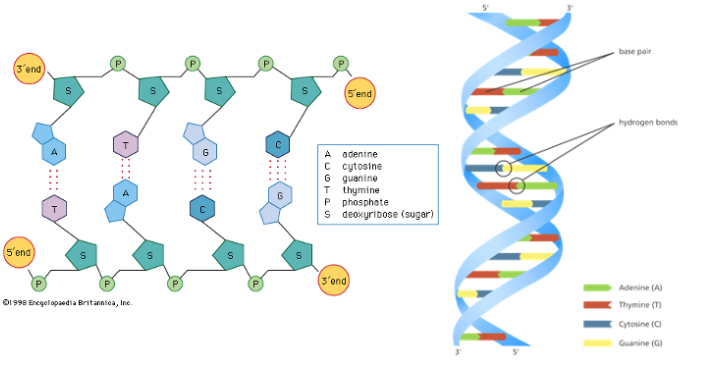
NUCLEOTIDES OF DNA AND DNA COMPONENTS
Adenine
Cytosine
Guanine
Thymine
Phosphate
Deoxyribose(sugar)
Nucleotide = nitrogenous
base + deoxyribose sugar + phosphate group
Base-pairing
Adenine-Thymine
Cytosine-Guanine
Bases:
Purine (2 rings): A and G
Pyrimidine (1 ring): C and T
Hydrogen bonding of bases
DNA REPLICATION
This copying of DNA is known as DNA replication.
The first step in replication is to unwind the double helix by breaking the hydrogen bonds. This is accomplished by an enzyme called helicase.
The exposed DNA strands now form a y-shaped replication fork.
Each strand can serve as a template for the synthesis of another strand.
DNA replication begins at specific sites called origins of replication.
DNA helix twists and rotates during DNA replication, another class of enzymes, called DNA topoisomerases, cuts, and rejoins the helix to prevent tangling.
The enzyme that performs the actual addition of nucleotides to the freshly built strand is DNA polymerase. But DNA polymerase can add nucleotides only to the 3′ end of an existing strand.
To start off replication, an enzyme called RNA primase adds a short strand of RNA nucleotides called an RNA primer.
After replication, the primer is degraded by enzymes and replaced with DNA so that the final strand contains only DNA.
During DNA replication, one DNA strand is called the leading strand, and it is made continuously. The nucleotides are steadily added one after the other by DNA polymerase.
The other strand—the lagging strand—is made discontinuously. Unlike the leading strand, the lagging strand is made in pieces of nucleotides known as Okazaki fragments.
Nucleotides are added only in the 5′ to 3′ direction since nucleotides can be added only to the 3′ end of the growing chain.
However, when the double-helix is “unzipped,” one of the two strands is oriented in the opposite direction—3′ to 5′.
Because DNA polymerase doesn’t work in this direction, the strand needs to be built in pieces.
The lagging strand is built in the opposite direction of the way the helix is opening, so it can build only until it hits a previously built stretch. Once the helix unwinds a bit more, it can build another Okazaki fragment.
These fragments are eventually linked together by the enzyme DNA ligase to produce a continuous strand.
Finally, hydrogen bonds form between the new base pairs, leaving two identical copies of the original DNA molecule.
When DNA is replicated, we don’t end up with two entirely new molecules.
Each new molecule has half of the original molecule. Because DNA replicates in a way that conserves half of the original molecule in each of the two new ones, it is said to be semiconservative.
The bits of unimportant DNA are at the ends of a molecule. These ends are called telomeres.
Many enzymes and proteins are involved in DNA replication.
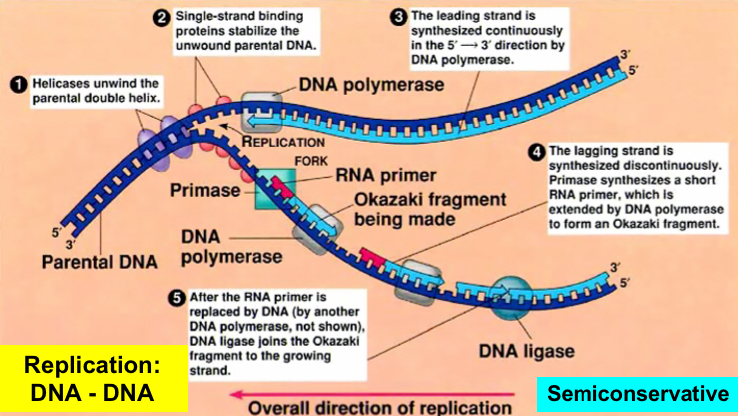
FROM GENE TO PROTEIN
Gene - a DNA sequence that codes for one polypeptide or a trait.
Genetic is transmitted from the nucleus to the cytoplasm where protein synthesis occurs.
TRANSCRIPTION
Process by which DNA is copied to RNA.
Involves an enzyme called RNA polymerase.
Steps to transcribe DNA:
RNA attaches to DNA at a sequence called the promoter.
DNA strand separates temporarily.
RNA polymerase adds RNA nucleotides to the DNA template.
RNA polymerase travels along template strand.
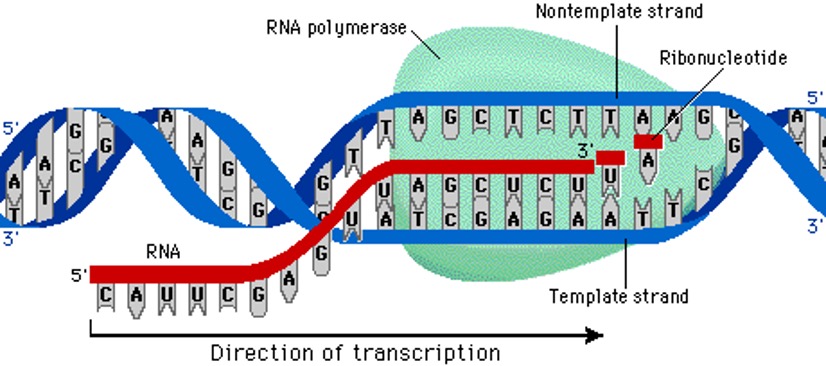
TRANSLATION: MRNA TO PROTEIN
The process through which information encoded in messenger RNA (mRNA) directs the addition of amino acids during protein synthesis.
It is essentially a translation from one code (nucleotide sequence) to another code (amino acid sequence).
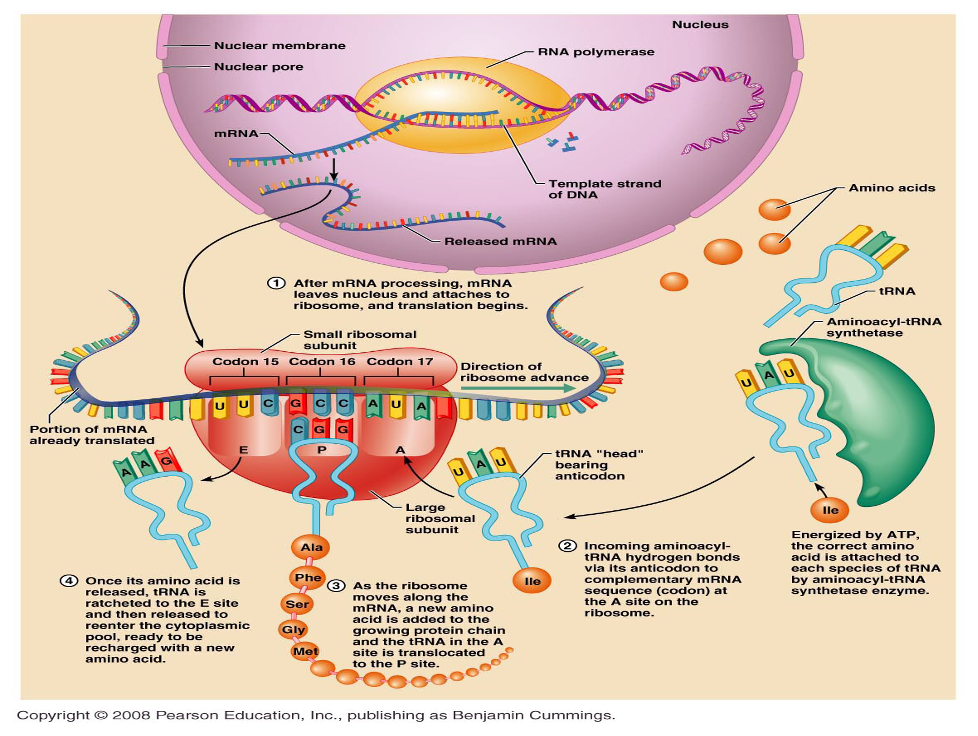
CHANGES IN DNA AND CHROMOSOMES
Changes in the genetic material increase genetic variability and adaptation to changing environments.
These are fuels of evolution
POINT MUTATIONS
Changes in the nucleotide sequences resulting from replacement, addition, or deletion of nucleotides.
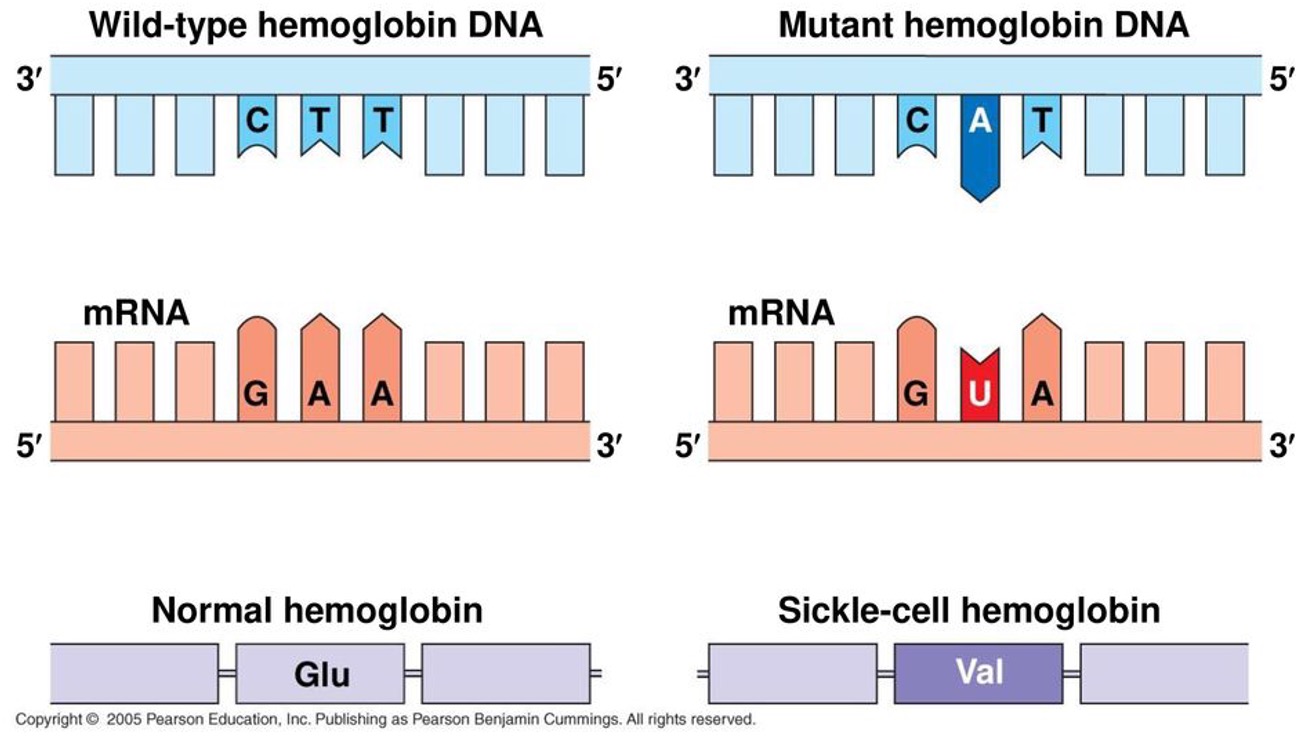
VARIATION IN CHROMOSOME NUMBER
Polyploidy - Changes in the entire set of chromosomes.
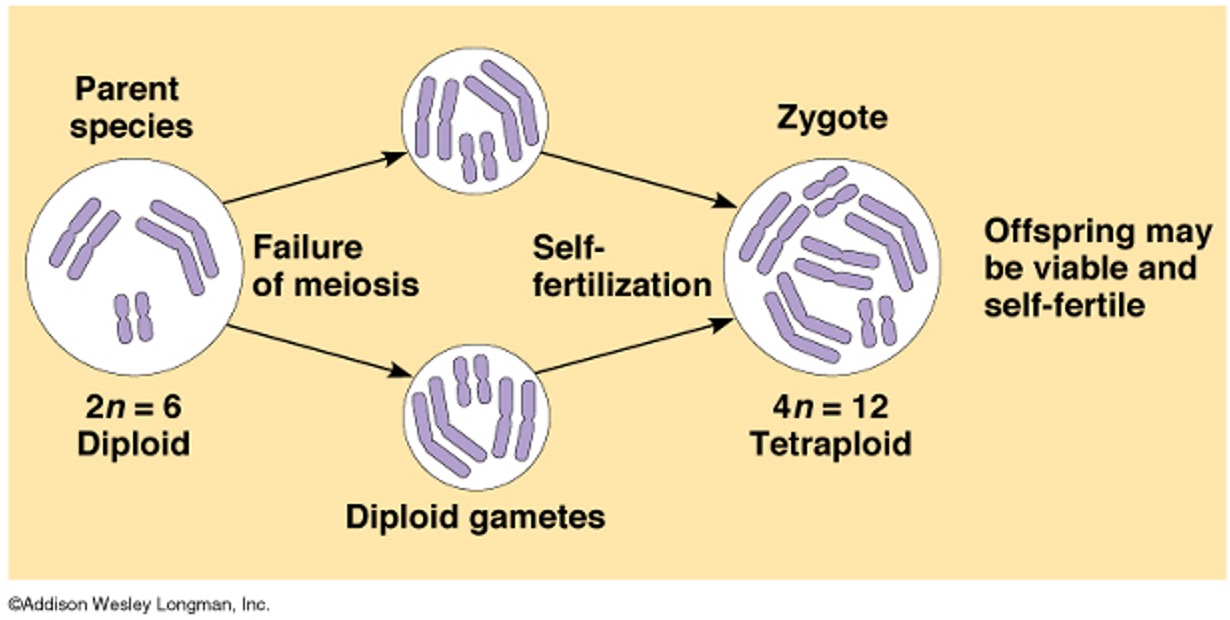
Aneuploidy - Nondisjunction of homologous pairs lead to the addition or deletion of one or more chromosomes to the set.
eg. 2N + 1 ~ trisomy
2N - 1 ~ monosomy
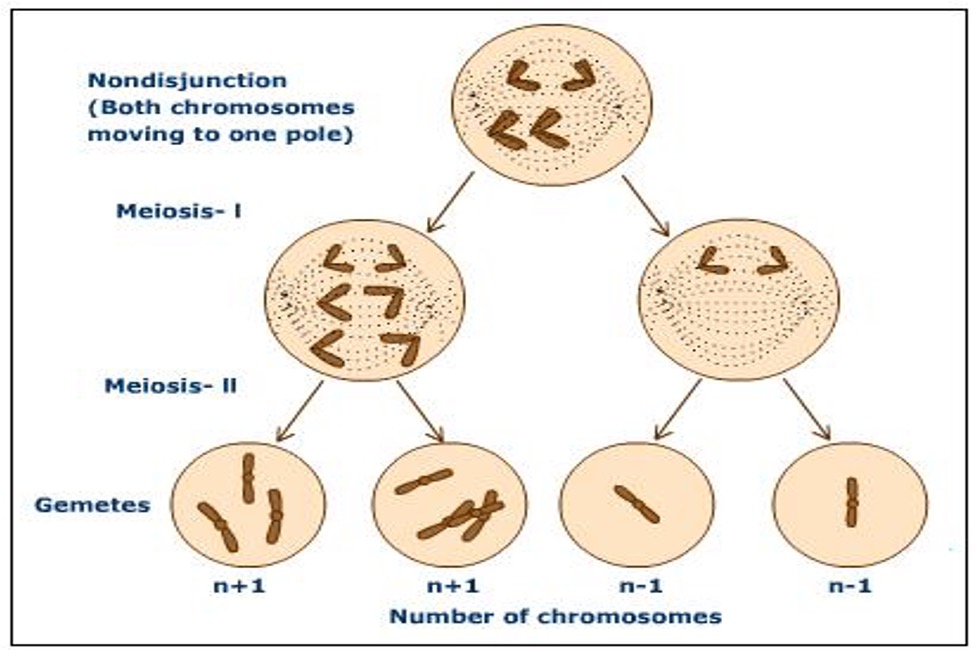
VARIATION IN CHROMOSOME STRUCTURE
Breaks in chromosomes resulting to different sequence of genes, multiple copies of genes or missing genes.
INHERITANCE PATTERNS IN ANIMALS
A gene or a DNA sequence coding for a trait is located at a specific locus or site in the chromosome.
TRAIT
A characteristic brought by the expression of a gene.
eg. wing size & fur color
GENOTYPE
Refers to the genetic makeup of an organism, including all the genes it carries. The overall sum of the genetic composition.
PHENOTYPE
Is the observable physical or biochemical characteristics of an organism, resulting from the interaction between its genotype and the environment. The visual expression.
ALLELES
Are different forms of a gene. They can be dominant or recessive, determining the expression of a particular trait.
eg. regular, vestigial
black, brown, white
DOMINANT ALLELE
Hides the expression of another allele
eg. B (black fur)
RECESSIVE ALLELE
Expression is masked by another allele.
eg. b (white fur)
HETEROZYGOUS
Two different alleles occupy the loci of homologous chromosomes. Also refers to having different alleles for a particular trait.
eg. Bb (black fur)
dominant allele is expressed
HOMOZYGOUS
Two identical alleles of the gene occupy the loci of homologous chromosomes. Also refers to having inherited the same versions (alleles) of a genomic marker from each biological parent.
HOMOZYGOUS RECESSIVE
It carries two copies of the recessive allele. Both alleles (factors) for a trait are the same and recessive (aa).
eg. bb (white fur)
HOMOZYGOUS DOMINANT
A genotype where an individual inherits two copies of a dominant gene (AA).
eg. BB (black fur)
Trait: wing size
prominent genetics subject among animals

Mendelian inheritance is the basic principle of heredity proposed by Gregor Mendel. It states that traits are determined by discrete units (genes) that are inherited independently.
Punnett square is a tool used to predict the possible combinations of alleles in offspring, based on the genotypes of the parents.
Genetic disorders are conditions caused by abnormalities or mutations in genes. They can be inherited or arise spontaneously.
DNA (deoxyribonucleic acid) is a molecule that carries the genetic instructions used in the development and functioning of all known living organisms.
Mutation is a change in the DNA sequence. It can lead to genetic variation and may have positive, negative, or neutral effects on an organism.
Genetic engineering is the manipulation of an organism's genes to achieve desired traits or outcomes. It has applications in medicine, agriculture, and other fields.
Genetic counseling is a service that provides information and support to individuals or families with concerns about inherited conditions or genetic risks.
Genome refers to the complete set of genetic material (DNA) in an organism. It includes all the genes and non-coding regions.
Epigenetics is the study of changes in gene expression or cellular phenotype that do not involve changes to the underlying DNA sequence. It explores how environmental factors can influence gene activity.
Genetic diversity